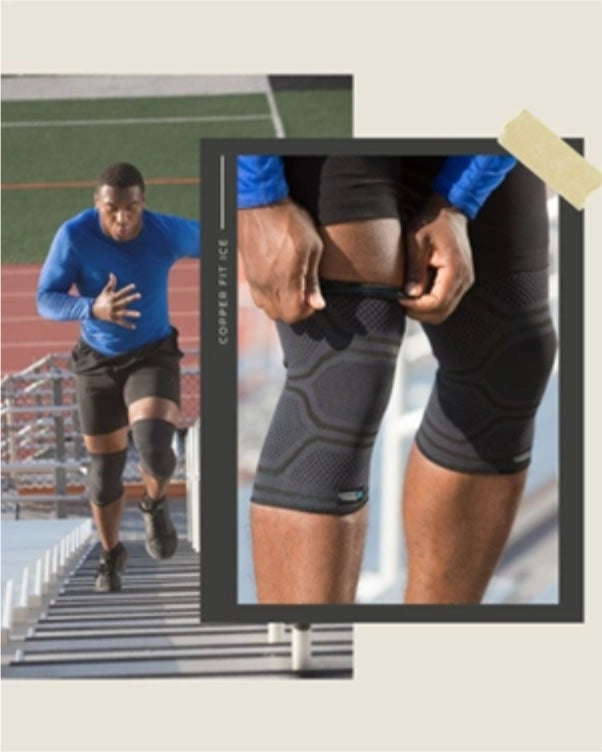
Key Takeaways
- The average person walks a mile in 15–20 minutes, depending on pace, fitness level, and terrain.
- Walking is one of the most effective and accessible ways to support circulation, mobility, and overall recovery.
- Consistent walking, even on rest days, can help ease tension, promote active recovery, and support long-term wellness goals.
Walking is one of the most beneficial forms of movement for your body. It’s low impact, easy to fit into your day, and supports both physical and mental well-being. Whether you’re new to fitness or simply trying to stay active, knowing how long it takes to walk a mile can help you measure progress, set goals, and stay motivated.
Your pace can tell you a lot about your cardiovascular endurance, leg strength, and recovery status. And while there’s no single “perfect” time, understanding what affects your walking speed helps you use every step more effectively.
This guide breaks down how long it typically takes to walk a mile, what influences your pace, and how walking can support your fitness and recovery goals — one steady stride at a time.
What Is the Average Time To Walk a Mile?
The average adult walks at a pace of 3 to 4 miles per hour, which means it usually takes about 15 to 20 minutes to complete one mile. That time can vary based on your fitness level, age, walking terrain, and even the weather.
Typical walking times can vary depending on pace type. Consider the following paces to help gauge your ideal mile time:
- Casual stroll: 20–25 minutes
- Moderate pace: 15–20 minutes
- Brisk walk: 12–15 minutes
- Power walk: 10–12 minutes
These numbers are general estimates, but they give you a good baseline for what’s realistic. If you’re just getting started, a 20-minute mile is a solid goal. As your endurance and stride improve, you may gradually see your pace drop closer to 15 minutes, without needing to push yourself too hard.
What Can Affect Your Walking Time?
- Age: Natural changes in stride length and muscle elasticity can influence walking pace.
- Fitness Level: Those who walk regularly or train for endurance naturally move more efficiently.
- Terrain: Inclines, trails, or uneven surfaces require more effort than flat pavement.
- Weather: Wind resistance, heat, or humidity can affect stamina and comfort.
- Recovery State: Muscle soreness or tension from previous workouts can temporarily reduce pace, which is perfectly normal.
How Terrain and Incline Affect Your Time
Terrain has a measurable impact on how long it takes to walk a mile.
-
Flat pavement: Great for beginners and for tracking pace improvements.
-
Hills or trails: Engage more muscles and help strengthen the lower body, but often slow your pace by several minutes per mile.
- Treadmill walking: Lets you adjust incline and speed precisely for structured progress or controlled recovery sessions.
Each type of terrain offers benefits. The key is balancing challenge with comfort so your body adapts safely.
How Walking Speed Varies by Goal
Your ideal walking pace depends on what you want to achieve. Different speeds activate your muscles and cardiovascular system in unique ways, all of which can support better mobility and endurance.
General Fitness and Wellness
For overall wellness, a moderate pace of about 15–18 minutes per mile is ideal. This level of effort helps increase heart rate, supports healthy blood flow, and encourages steady improvement over time.
At this pace, you can carry on a conversation but still feel that your body is working. It’s effective for those wanting to maintain activity levels, manage energy, and support healthy movement habits.
Weight Management
If your goal is to burn more calories and build stamina, aim for a brisk walk of around 12–15 minutes per mile. This pace strengthens your leg and core muscles while boosting cardiovascular endurance.
Science shows that moderate-to-brisk walking increases oxygen demand, prompting the body to utilize stored energy more efficiently. Over time, this supports both fitness and body composition goals when combined with balanced nutrition.
Endurance and Performance Training
To build endurance or prepare for longer workouts, you can try power walking or interval walking — alternating between brisk and faster-paced segments. This variation challenges your muscles, enhances aerobic capacity, and supports circulation and recovery.
It’s a simple, joint-friendly form of conditioning that keeps your body engaged without the strain of high-impact workouts.
Recovery and Active Rest
On rest days, walking at a gentle, comfortable pace can actually support recovery. Light walking helps maintain healthy circulation, ease muscle tension, and promote mobility without overexertion.
Active recovery walks are especially beneficial after strength or endurance training sessions. They keep your body moving, help reduce lingering soreness, and support your muscles’ natural repair processes.
How To Measure Your Walking Pace
Tracking your pace helps you see real progress, even when improvements feel small. There are several easy ways to measure your walking time and distance:
-
Use a smartwatch or fitness app: Many devices automatically record your pace, heart rate, and distance covered.
-
Try a pedometer or phone step tracker: Most smartphones provide step counts and average pace data.
- Manual method: Time your walk and divide minutes by miles (e.g., 20 minutes ÷ 1 mile = 20 min/mile).
For the most accurate reading, measure the same route consistently and keep similar walking conditions when comparing results. Consistency matters more than perfection. Even small reductions in your average mile time over weeks or months reflect meaningful progress.
What Are the Benefits of Walking Every Day?
Walking daily can help your body recover, function efficiently, and feel better overall. The benefits of consistent walking are both physical and mental, and they can fit naturally into any wellness routine.
Supports Healthy Circulation
Walking increases heart rate just enough to promote oxygen-rich blood flow throughout the body. This steady movement helps deliver nutrients to muscles and joints, supporting flexibility and mobility over time.
Encourages Muscle Recovery
On active rest days, gentle walking helps loosen tight muscles and ease soreness from previous workouts. Keeping the body in light motion encourages the body’s natural recovery response.
Improves Mood and Focus
Regular walking releases endorphins and supports stress management, helping you maintain a calm, focused mindset. It’s a natural way to balance mental and physical wellness.
Promotes Long-Term Mobility
Consistent walking keeps joints lubricated and muscles engaged, helping maintain range of motion and functional strength as you age.
How Much Should You Walk Each Day?
A common goal is 7,000–10,000 steps per day, which equals roughly 3 to 5 miles, depending on stride length. But it’s not all or nothing: even short 10–15 minute walks throughout the day can add up to major benefits over time.
If you’re new to walking, start small. Begin with one mile a day and gradually increase distance or pace as your comfort improves.
Tips To Improve Your Walking Pace Safely
Improving your walking pace doesn’t have to mean pushing yourself to exhaustion. It’s about helping your body move efficiently, recover effectively, and stay consistent. Whether you’re walking for wellness, endurance, or recovery, small adjustments can make a meaningful difference.
Warm Up and Cool Down
Start each walk with light dynamic stretches like gentle leg swings, ankle rolls, or torso twists to prepare your muscles and joints. After walking, cool down with slower-paced movement and stretching to help support healthy blood flow and muscle recovery. These steps help your body adapt to activity safely and reduce the chance of soreness later.
Focus on Form
Good walking posture supports energy efficiency. Keep your head up, shoulders relaxed, and core engaged. Swing your arms naturally and maintain a comfortable stride. Overstriding can cause unnecessary tension, while too-short steps can limit your rhythm. The goal is smooth, steady motion that feels natural and sustainable.
Gradually Increase Intensity
If you want to improve speed or endurance, add short bursts of brisk walking between your usual pace. This type of interval training helps strengthen your cardiovascular system and builds stamina over time. Try alternating one minute of faster walking with two minutes of moderate effort.
Support Circulation and Recovery With Compression Gear
Compression socks or knee sleeves can help support circulation and muscle stability while you walk. They’re especially helpful for longer distances or recovery days, as they help reduce leg and calf fatigue and support natural muscle alignment.
Wearing compression gear can also help support healthy blood flow, which may reduce feelings of heaviness or soreness after activity, helping you stay consistent with your walking routine.
Prioritize Hydration and Rest
Even low-impact exercise like walking requires adequate hydration. Water helps regulate body temperature and supports muscle function. Pair regular walks with balanced rest, which allows your muscles to repair and adapt, helping you progress without strain.
Frequently Asked Questions
How long does it take to walk a mile on average?
For most adults, a mile takes 15 to 20 minutes depending on pace, fitness level, and terrain. Consistency and comfort are more important than speed, especially when you’re building endurance or focusing on recovery.
Is walking a mile a day enough exercise?
Walking a mile a day can support circulation, mobility, and active recovery. As your stamina improves, you can increase distance or intensity to continue challenging your body safely.
Can walking help with recovery after workouts?
Absolutely. Gentle walking supports natural muscle recovery by promoting healthy blood flow and easing soreness after higher-intensity exercise.
The Bottom Line
Here at Copper Fit, we believe recovery and performance go hand in hand. Walking a mile — whether it takes you 10 minutes or 25 — is a simple, powerful way to keep your body active and resilient. Our compression gear is designed to support circulation, ease muscle tension, and help you recover so you can keep moving comfortably every day.
Your fitness journey doesn’t have to be complicated. It starts with one step, one mile, and one commitment to take care of your body.
Sources:
Accumulating brisk walking for fitness, cardiovascular risk, and psychological health | PubMed
Health benefits of interval walking training | PubMed
Basic walking program can help athletes' recovery | Sanford Health News





